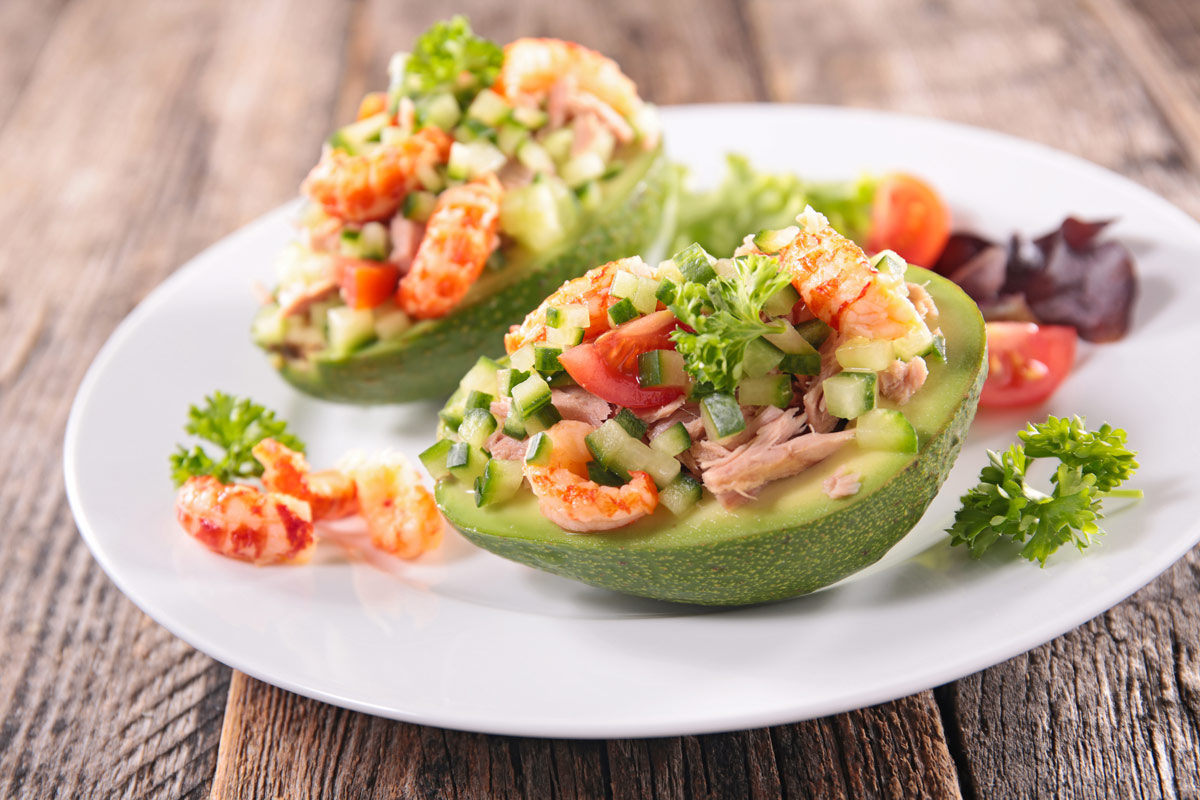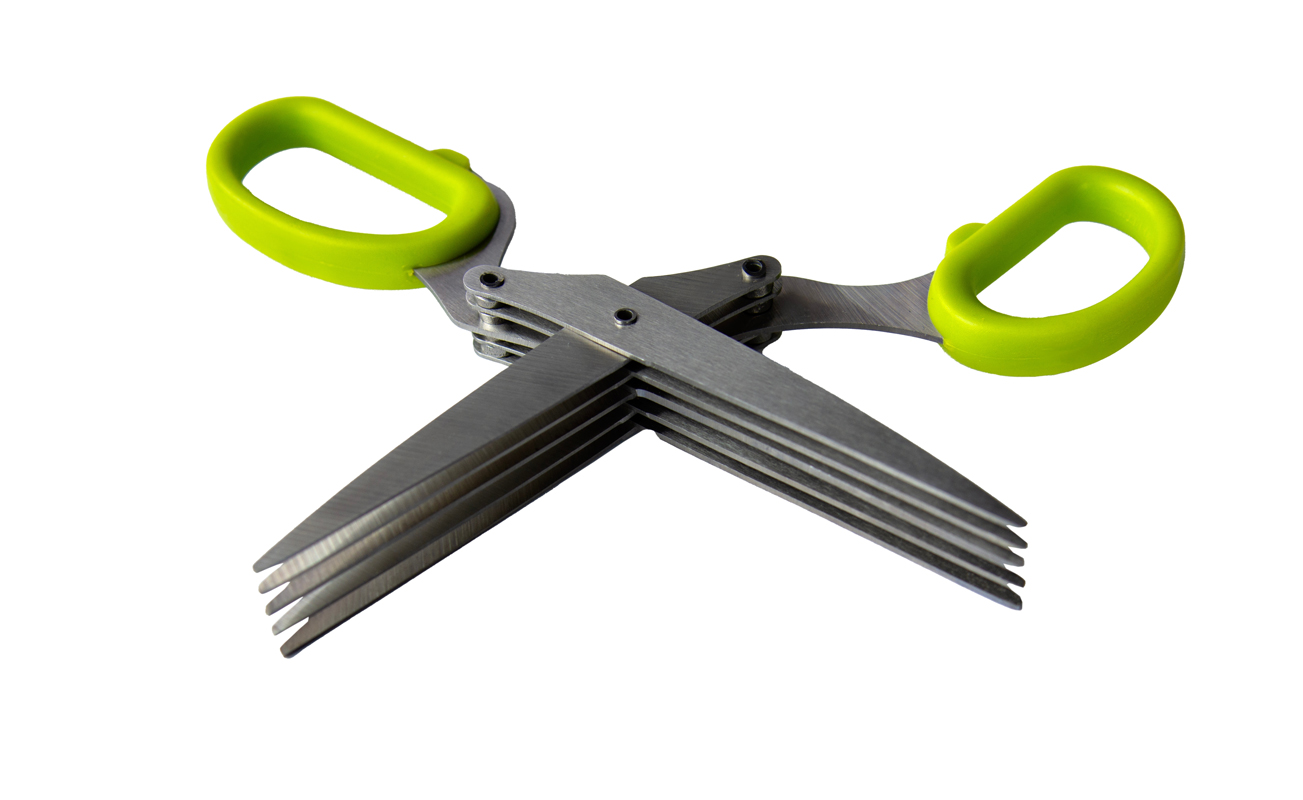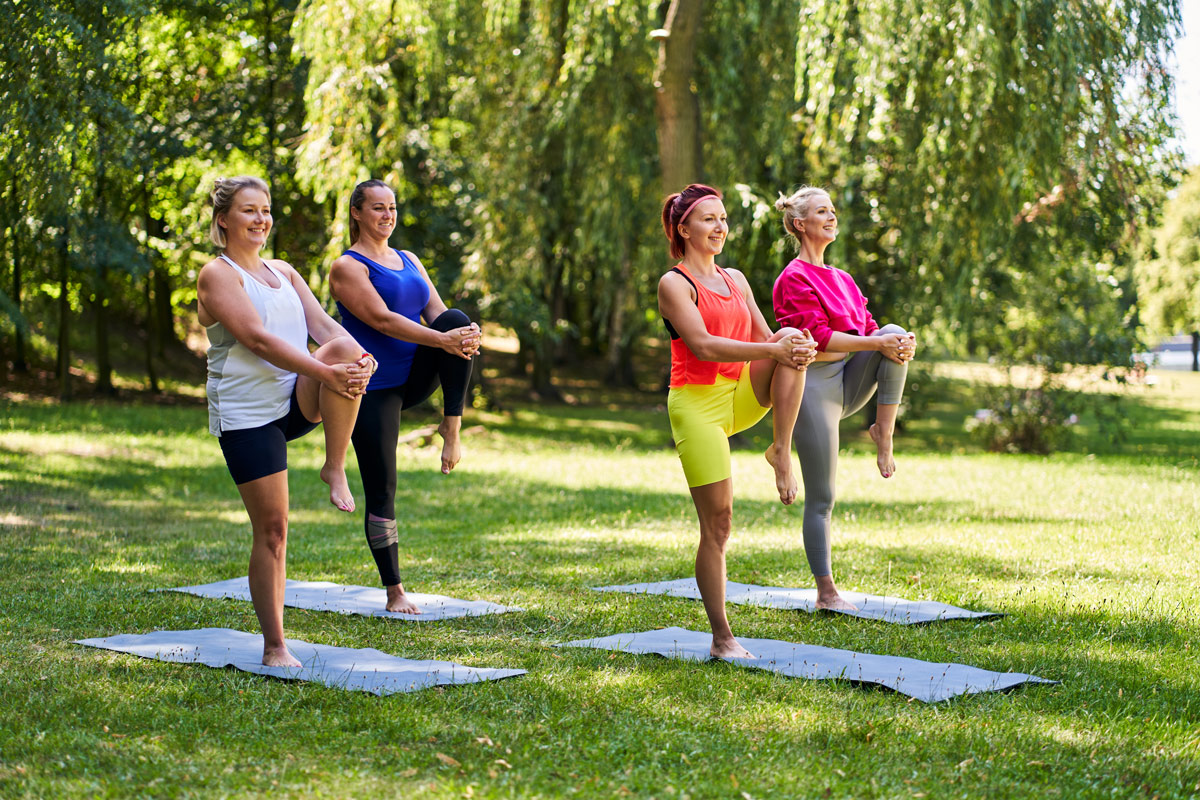Seafood and Avocado Salad Recipe, Spotlight on Dill and Herb Scissors, Could Your Diet Be Increasing Your Anxiety? And Knee Arthritis, Exercise, and Your Subconscious
Are you usually underwhelmed when you buy premade seafood salad? Making your own is not only tastier but also less expensive. And prepared with healthful ingredients, like extra virgin olive oil and avocado instead of questionable fillers, it’s also good for you. The distinction between healthy and unhealthy fats is made clear in the first study that I’m sharing—you’ll see why a diet of saturated fat is linked to anxiety. Turning to fitness, many people with knee arthritis don’t heed their doctor’s advice to exercise…here are the results of a study that found they may have a subconscious resistance to activity.
Seafood and Avocado Salad
 Seafood and Avocado Salad
Seafood and Avocado SaladPick your own culinary adventure with the seafood you choose for this dish—succulent lobster meat, crabmeat, shrimp, calamari rings, or any combination. I love to serve the seafood in avocado halves, but if you prefer a handheld meal, add avocado cubes to the mix and sandwich it between ciabatta slices that have been lightly toasted or grilled and drizzled with olive oil.
Ingredients
- 1 pound cooked shellfish
- 8 ounces cherry tomatoes, halved
- 1 cucumber, diced
- 1/2 cup chopped red onion
- 1/4 cup extra virgin olive oil
- 2 tablespoons balsamic vinegar, plus more to taste
- 1 tablespoon chopped fresh dill
- Coarse sea salt to taste
- Freshly ground black pepper to taste
- 3 ripe avocados, halved and pitted
Directions
In a large bowl, mix the shellfish, tomatoes, cucumber, red onion, olive oil, vinegar, and dill. Taste and season as desired with salt and pepper. Divide the salad among the avocado halves, mounding it high (a large ice cream scoop works well).
Yields 6 servings

Healthy Ingredient Spotlight
Dill
Fresh dill is a delicate yet delicious addition to many types of salads, including various versions of potato salad, and can be used for enhancing eggs, dishes with smoked or fresh salmon, and dressings. Because of its feathery shoots, dill makes a showy garnish. It’s best used in cold dishes; when using it during cooking, add it at the very last minute or right after you’ve removed the food from the heat.
It’s easy to grow dill in your herb garden (it often reseeds itself) or plant it in a window box so you can regularly reach for it. If you buy a bunch from the store or farmers’ market, place the stems in a tall glass of water, cover the tops, and refrigerate to increase shelf life. As with other fresh herbs, it can be puréed with extra virgin olive oil and frozen in an ice cube tray for future use (bag the cubes as soon as they become solid). Dill is sold dried as dill weed, with a very mild flavor that actually improves when heated.

Quick Kitchen Nugget
Herb Scissors

This nifty gadget makes mincing herbs nearly effortless. Rather than a single blade, herb scissors have multiple blades—up to 5—that chop your herbs for you as you snip. There are also single blade herb shears for cutting larger-leaf herbs and herb strippers that strip herbs from their stems.

For Your Best Health
Could Your Diet Be Increasing Your Anxiety?
When stressed out, many of us turn to junk food for solace. But new University of Colorado Boulder research suggests this strategy may backfire. The study found that, in rats, a high-fat diet disrupts gut bacteria, alters behavior and, through the complex pathway that connects the gut to the brain, influences brain chemicals in ways that fuel anxiety. It’s important to note that the researchers are not talking about healthy fats like those found in fish, olive oil, nuts, and seeds—these are considered anti-inflammatory and good for the brain.
“Everyone knows that [high-fat junk foods] are not healthy foods, but we tend to think about them strictly in terms of a little weight gain,” said lead author Christopher Lowry, PhD, a professor of integrative physiology at CU Boulder. “If you understand that they also impact your brain in a way that can promote anxiety, that makes the stakes even higher.”
Dr. Lowry’s team divided adolescent rats into two groups: Half got a standard diet of about 11% fat for nine weeks while the others got a high-fat diet of 45% fat, consisting mostly of saturated fat from animal products. (The typical American diet is about 36% fat, according to the Centers for Disease Control and Prevention.) Throughout the study, the researchers collected fecal samples and assessed the animals’ microbiome, or gut bacteria. After nine weeks, the animals underwent behavioral tests.
Importantly, the researchers stressed that not all fats are bad, and that healthy fats like those found in fish, olive oil, nuts, and seeds can be anti-inflammatory and good for the brain.
When compared to the control group, the group eating a high-fat diet, not surprisingly, gained weight. But the animals also showed significantly lower diversity of gut bacteria. Generally speaking, more bacterial diversity is associated with better health, Dr. Lowry explained. These mice hosted far more of a category of bacteria called firmicutes and less of a category called bacteroidetes. A higher firmicutes-to-bacteroidetes ratio has been associated with the typical industrialized diet and obesity.
The high-fat diet group also showed higher expression of three genes—tph2, htr1a, and slc6a4—involved in the production and signaling of the neurotransmitter serotonin, particularly in a region of the brainstem called cDRD and associated with stress and anxiety.
While serotonin is often billed as a feel-good brain chemical, Dr. Lowry pointed out that certain subsets of serotonin neurons can, when activated, prompt anxiety-like responses in animals. In fact, heightened expression of tph2, or tryptophan hydroxylase, in the cDRD has been linked to mood disorders and suicide risk in people.
“To think that just a high-fat diet could alter expression of these genes in the brain is extraordinary,” said Dr. Lowry. “The high-fat group essentially had the molecular signature of a high anxiety state in their brain.” He suspects that an unhealthy microbiome compromises the gut lining, enabling bacteria to slip into the body’s circulation and communicate with the brain via the vagus nerve, an important pathway from the gastrointestinal tract to the brain.
“If you think about human evolution, it makes sense,” Dr. Lowry explained. “We are hardwired to really notice things that make us sick so we can avoid those things in the future.”
His advice: Eat as many different kinds of fruits and vegetables as possible, add fermented foods to your diet to support a healthy microbiome, and lay off the pizza and fries. Also, if you do have a hamburger, add a slice of avocado. Some research shows that good fats can counteract some of the effects of bad fats.

Fitness Flash
Knee Arthritis, Exercise, and Your Subconscious

Knee osteoarthritis (OA) is a common cause of pain and joint stiffness. And while physical activity is known to ease symptoms, only one in 10 people regularly exercises. Understanding what contributes to this inactivity is the focus of a study from the University of South Australia (UniSA) in Adelaide, where researchers found that people with knee OA unconsciously believe that activity may be dangerous to their condition, despite medical advice telling them otherwise.
The study found that of those surveyed, 69% of people with knee pain had stronger implicit (or unconscious) beliefs that exercise was dangerous than did the average person without pain. This highlights not only the conflicted nature of pain and exercise but also the fact that what people say and what people think, deep down, may be entirely different things.
Lead researcher and UniSA PhD candidate Brian Pulling said the research provides valuable insights for helping people with knee arthritis. “Research shows that physical activity is good for people with knee OA, but most people with this condition do not move enough to support joint or general health,” Pulling said. “To understand why people with OA might not be active, research studies typically use questionnaires to assess fear of moving. But unfortunately, questionnaires are limited—what we feel deep down (and how our system naturally reacts to something that is threatening) may be different than what we report. And we still know that many people are avoiding exercise, so we wanted to know why.”
To do so, the researchers developed a tool called the Implicit Association Test that can detect and evaluate people’s implicit beliefs about exercise, meaning whether they unconsciously think activity is dangerous for their condition. The test presents a series of words and images which a participant must quickly associate with being either safe or dangerous. It intentionally promotes instant responses to avoid deliberation and other influencing factors (such as responding how they think they should respond).
“We found that even among those who said they were not fearful about exercise, they held unconscious beliefs that movement was dangerous,” Pulling said. “Our research shows that people have complicated beliefs about exercise, and that they sometimes say one thing if asked directly yet hold a completely different implicit belief. This research suggests that to fully understand how someone feels about an activity, we must go beyond just asking directly, because their implicit beliefs can sometimes be a better predictor of actual behavior than what people report. That’s where our tool is useful.”
The tool has the potential to identify a group of people who may have challenges to increasing their activity levels and undertaking exercise. Added Tasha Stanton, PhD, Associate Professor in clinical pain neuroscience and co-Director and Osteoarthritis Research Theme Lead at IIMPACT in Health at UniSA, “Having access to more accurate and insightful information will help health professionals better support their patients to engage with activity and exercise. It may also open opportunities for pain science education, exposure-based therapy, or cognitive functional therapy…things that would not usually be considered for someone who said that they were not scared to exercise.”
Get More Recipes In Your Inbox!